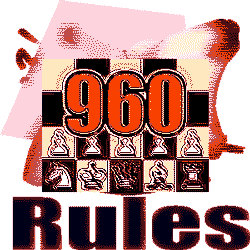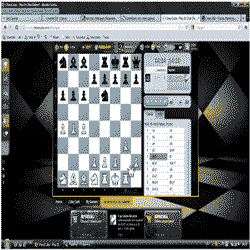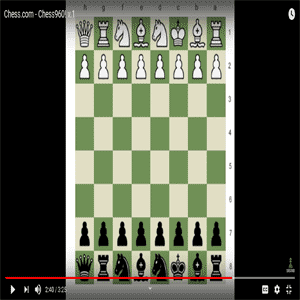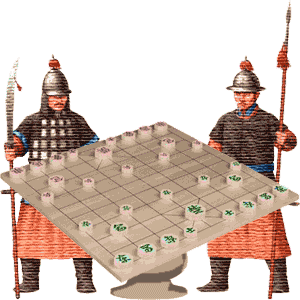Chess 960 - Fischer Random Chess
Chess 960 (Fischer Random Chess)
Games would often go 20 moves or more before players were "out of book". Only then would they actually resort to their own skill or ingenuity. Fischer also believed that Russian players were pre-arranging games from the first move to the last.
Jose Raul Capablanca had earlier flirted with the idea of bigger boards (10x8) and the introduction of new pieces. Fischer stuck with the same 8x8 board and kept the same pieces with the same powers. But he removed the relevance of opening analysis and the possibility of pre-arranging entire games with one simple change.
The back row pieces would no longer start in their traditional places. In each game they would be jumbled up. This new variant would also be known as Chess 960 as there are 960 different possible starting positions. Now players would have to rely on their natural ability and skill right from the first move. You can share your Fischer Random Chess Showdowns right here.
History

Chess 960 History
Shuffle chess had been played since as early as 1842. Even then the effect of opening analysis on chess inspired some to counteract it. So Fischer's idea had not come out of thin air. Like many great innovations it was a modification or refinement of earlier ideas. In 1996 Fischer unveiled Chess 960 in Buenos Aires, Argentina.
The main difference between Shuffle Chess and Fischer Random Chess is that in Shuffle Chess the eight back row pieces can find themselves on any square. There is no castling and the pieces do not need to mirror each other. Fischer's variant provides for castling and the two armies retain a mirrored set-up. He also kept Bishops on opposite colors so as to remove opening theory but preserve the fundamentals of chess.
Rules

Chess 960 Rules
Players can agree on the set-up for each individual game or can use a dice to decide it. The only limitations are that the 2 Bishops must be on different colors and the King must start between both Rooks to allow for castling. Pawns of course line up on the second rank, no change there. The two armies must mirror each other.
The same conditions apply for castling as in Western Chess. You can castle if neither the King nor the Rook in question has previously moved, if the King is not currently under attack and if no square that the King must cross is under attack. The pieces finish the maneuver on the squares they would normally occupy after castling in Western Chess.
Strategy

Chess 960 Strategy is the same as Standard Chess but you must find your own way in the openings
You try to gain center control with your pawn structure, preventing enemy invasions. In the middle game you battle for control of the board. You try to secure whatever material or positional advantage you can through strategic or tactical means. And in the endgame you use any advantage gained to close out the victory, or if you are at a disadvantage you try to battle for a draw.
The only difference with Chess 960 is that with all of the novel starting positions, players must play off the cuff from the first move as there is no opening theory to rely on.
Play

You can play Chess 960 on Chess.com, Ludeka.com or other chess gaming sites
There can be no pre-planned opening as the pieces could be anywhere for each new game, especially if you're using a dice for set-up. Or you can agree where to start the pieces with your opponent just before the game.
When you play this game online it truly is random. When the game starts, the computer will choose the initial set-up for you. You can take on a computer at Chess.com. You can play a human opponent at Ludoteka.com.
Tell Us About Your Craziest Chess 960 Games
Chess 960 is ripe for really unorthodox positions that you'd never find in regular chess. The game can quickly develop into alien positions. You will be asking questions and required to solve some tricky conundrums perhaps very early on. Your chess sense will be tested in ways never seen in regular chess. If you play Chess 960 regularly you will no doubt testify to this. You will surely have found yourself in remarkable positions that will interest others. We want to see your most exciting Chess 960 games. We welcome you to share them here.
Moving On

Chess Variant - Korean Chess
But I have to say, having played many games in this format, I have nothing but admiration for it. Fischer did manage to eliminate the ills as he saw them with Western Chess and yet retain all that is glorious about it. I wouldn't think of it as a replacement for chess but I do enjoy playing a couple of games at frequent intervals.
The next variant in the series is another from South-East Asia. Also called Janqui, Changgi or Jangki, this is a variant closely related to Chinese Chess (Xiangqi). This is Korean Chess.






